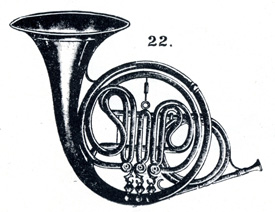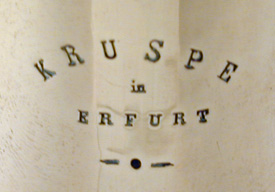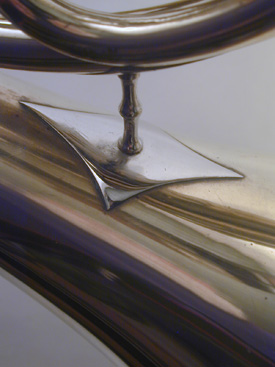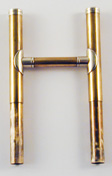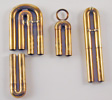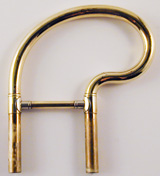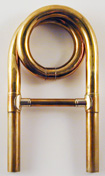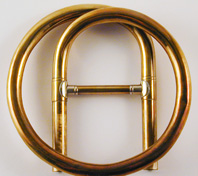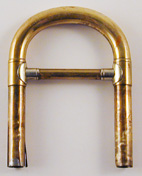| Label :
|
KRUSPE IN ERFURT |
||
|
Model:
|
Friedrich Gumpert Single with crooks |
||
|
Serial Number:
|
none |
||
|
Date of Manufacture:
|
ca. 1875 - 1900 |
||
|
Key(s):
|
B♭, B♮, C,
D♭, D, E♭,
E, F, G, A♭,
A, B♭, B♮ (crooks shown in red; other keys derived with slides) |
||
|
Valves:
|
3 rotary with adjustable clockwork springs |
||
|
Bore:
|
11.40 mm |
||
|
Bell Flare:
|
very large gusset, 180 deg. at edge, French bead |
||
| 6.5 cm |
|||
|
Bell Diameter:
|
29.2 cm |
||
|
Base Metal:
|
yellow brass |
||
|
Finish:
|
unlacquered |
||
| . (click on photos for larger view) |
|||
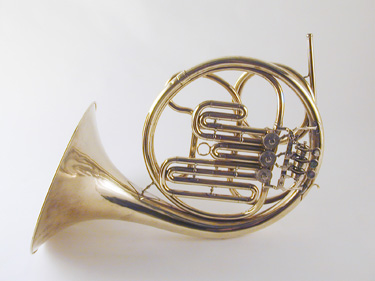 |
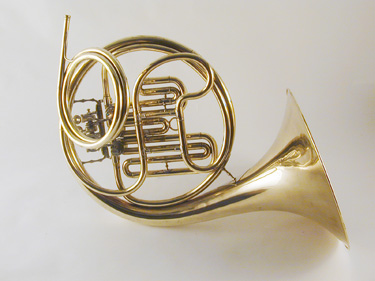 |
||
The very ornately-embellished horn shown above is the design of Friedrich Gumpert1 (1841 - 1906), solo hornist of the Gewandhaus Orchestra of Leipzig, and professor of horn at the Leipzig Conservatory. His students included Anton Horner (1877 - 1971), Max Hess (1878 - 1975), and Max Pottag (1876 - 1970). The date of this horn has not been firmly established, however it is probably one of several included in the Kruspe display in 1897 at the Saxon-Thuringian Industrial and Commercial Exhibition (Sächsische-Thüringishen Industrie und Gewerbe-Ausstellung) held in Leipzig during the Summer of 1897:
|
|||
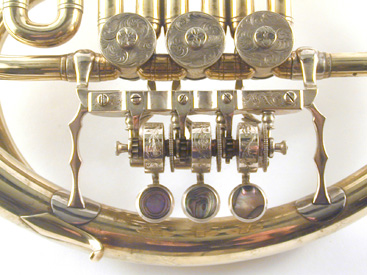
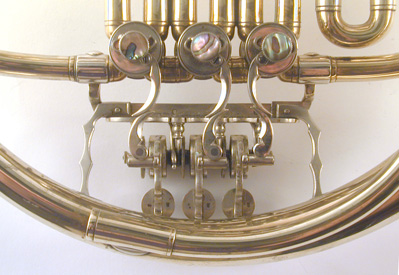 |
|||
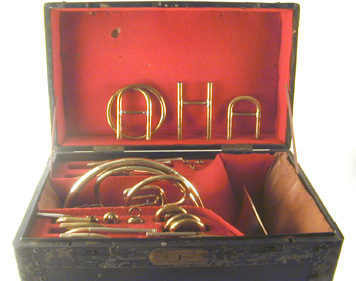 |
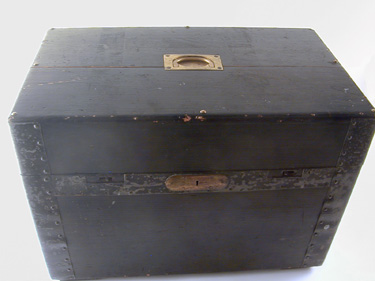 |
||
|
|||
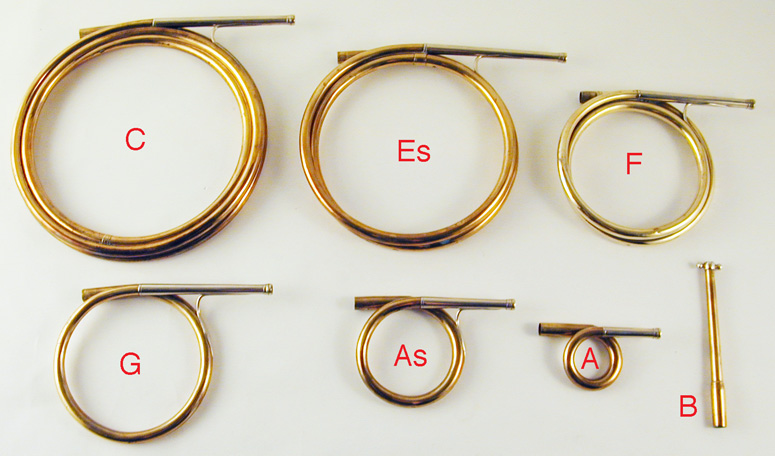 |
|||
|
|||
|
|
|||
